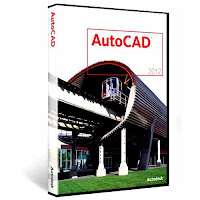
Security researchers have discovered a rare strain of AutoCAD malware that opens up compromised machines to secondary exploits.
ACM/SHENZ-A poses as a legitimate component of AutoCAD software for computer-aided design (CAD). But analysis by security researchers at Trend Micro has revealed that the malicious file opens up systems to exploits, specifically those targeting old vulnerabilities. The .FAS file that's the carrier of the malware packs a malicious script.
The malware first creates a user account with administrative rights on the system before creating network shares for all drives on an infected computer. It then opens up four system ports (137-139, and port 445), communication channels associated with the Server Message Block (SMB) protocol that provides file, print and share functionality between nodes on Windows networks. The tactic thwarts restrictions on Windows networks applied by sysadmins designed to frustrate common types of hack attacks.
"By opening the ports, exploits that target SMB can successfully run on affected systems, provided that the relevant vulnerabilities have not yet been patched," explains Anthony Joe Melgarejo, a threat response engineer at Trend Micro, in a blog post about the attack. "Security bulletins that cover the SMB vulnerabilities include MS10-020 and MS11-043":
http://blog.trendmicro.com/trendlabs-security-intelligence/autocad-malware-leaves-victims-hackable"The decision to create an account with administrator privilege is a strategic one. Without the said account, the attacker will have to crack passwords for existing accounts or remotely create one — processes that can be difficult and time-consuming. With the admin account, the attacker can easily steal all the files in those drives and plant other information-stealing malware."
As Trend Micro notes, AutoCAD malware is rare but not unprecedented. For example an AutoCAD virus surfacedin 2009. More worryingly an AutoCAD worm that appeared last year was blamed by security firm ESET for the theft of tens of thousands of drawings:
http://www.welivesecurity.com/2012/06/21/acadmedre-10000s-of-autocad-files-leaked-in-suspected-industrial-espionage ESET reckoned the malware, which it dubbed ACAD/Medre-A, lifted blueprints and sent them to email accounts located in China.
Business in Peru were the main victims of that attack, which seemed to be motivated by industrial espionage. Although the hackers behind the attack were using internet resources in China as drop-sites it doesn't necessarily follow that they were Chinese. Chinese authorities, ESET and Autodesk (he creator of AutoCAD) teamed up to thwart the ploy by blocking email accounts that were acting as conduits for stolen files.
The malware unearthed by Trend is different from last year's worm and has a slightly different purpose.
"Yep, ’tis different," explained Rik Ferguson, global VP of security research at Trend Micro. "The one mentioned by ESET was siphoning off AutoCAD documents by sending them out of affected machines by email. This new malware actually carries out system level activities on the affected machine, creating the admin account, enabling protocols and significantly weakening the security of the affected system by leaving it open to further exploitation."
The latest attack relies in part in tricking users into opening malicious attachment of a type - unlike executable, screen saver and doctored PDF files - rarely associated with malware.
"The primary advantage of AutoCAD malware may well be that users do not expect this type of document to be malicious; users should be careful about all document types and not just those that are 'well-known' to contain malware," Trend's Melgarejo advises.
(ElReg)
RootnoteA .FAS File Extension refers to a "Compiled Fast-Load AutoLISP File" a type of executable often used for creating macros that automate common processes within AutoCAD:
http://www.fileinfo.com/extension/fas

 Total Members: 14197
Total Members: 14197 Latest: Levine
Latest: Levine Total Posts: 43440
Total Posts: 43440 Total Topics: 16532
Total Topics: 16532 Online today: 3127
Online today: 3127 Online ever: 51419
Online ever: 51419





